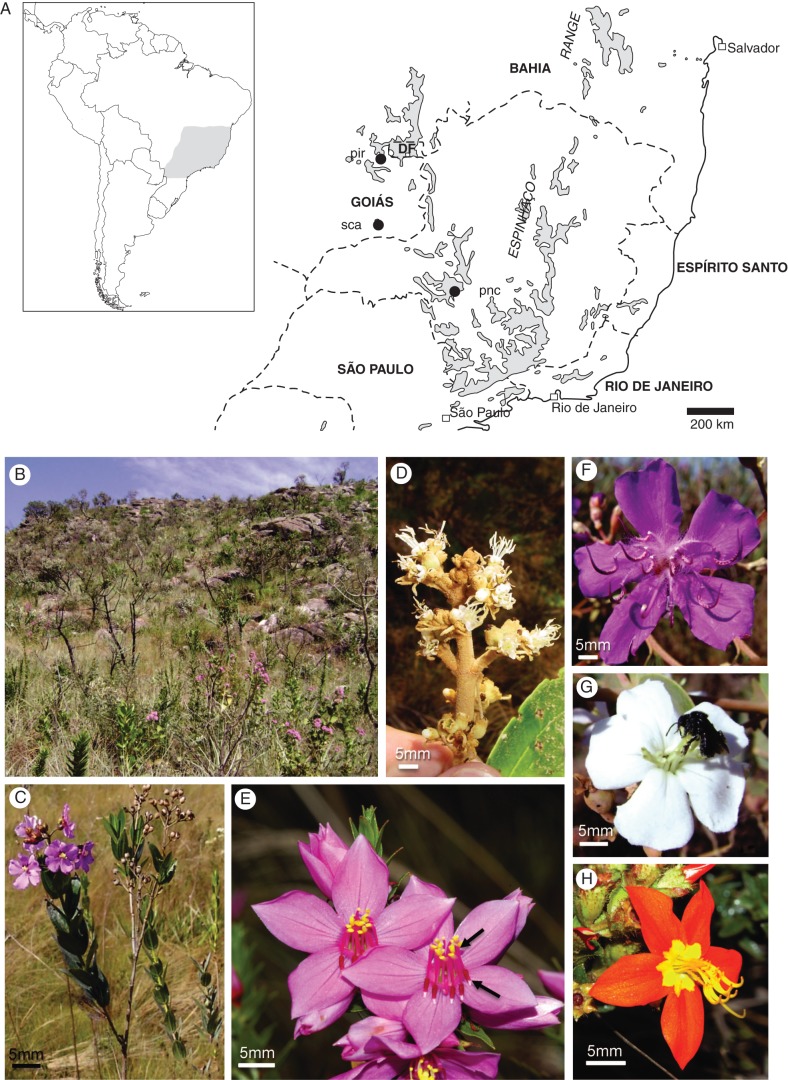Fig. 1.
Campo Rupestre areas specifically studied, environment and some of the species in these areas. (A) Shaded areas are 1000 m a.s.l. in Central Brazil where Campo Rupestre vegetation often appears (modified from Vasconcelos et al., 2003). Dots show the study areas; pir, Pirinópolis State Park; sca, Serra de Caldas Novas State Park; pnc, Parque Nacional da Serra da Canastra. (B) Campo Rupestre area on rocky outcrops at Serra da Canastra; (C) Svitramia hatschbachii habit; (D) flowers of Miconia rubiginosa; (E) flowers of Microlicia inquinans showing yellow connectives and anthers and less conspicuous anthers (arrows); (F) Tibouchina stenocarpa flower; (G) bee visiting Svitramia sp.; (H) flower of Cambessedesia regnelliana.

